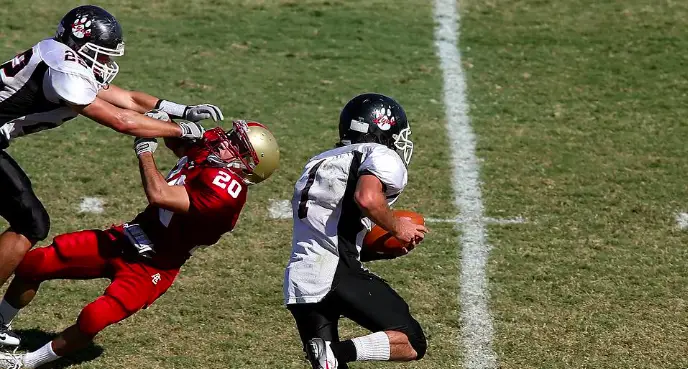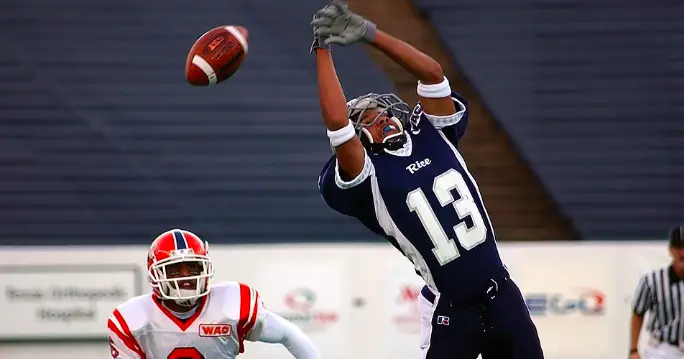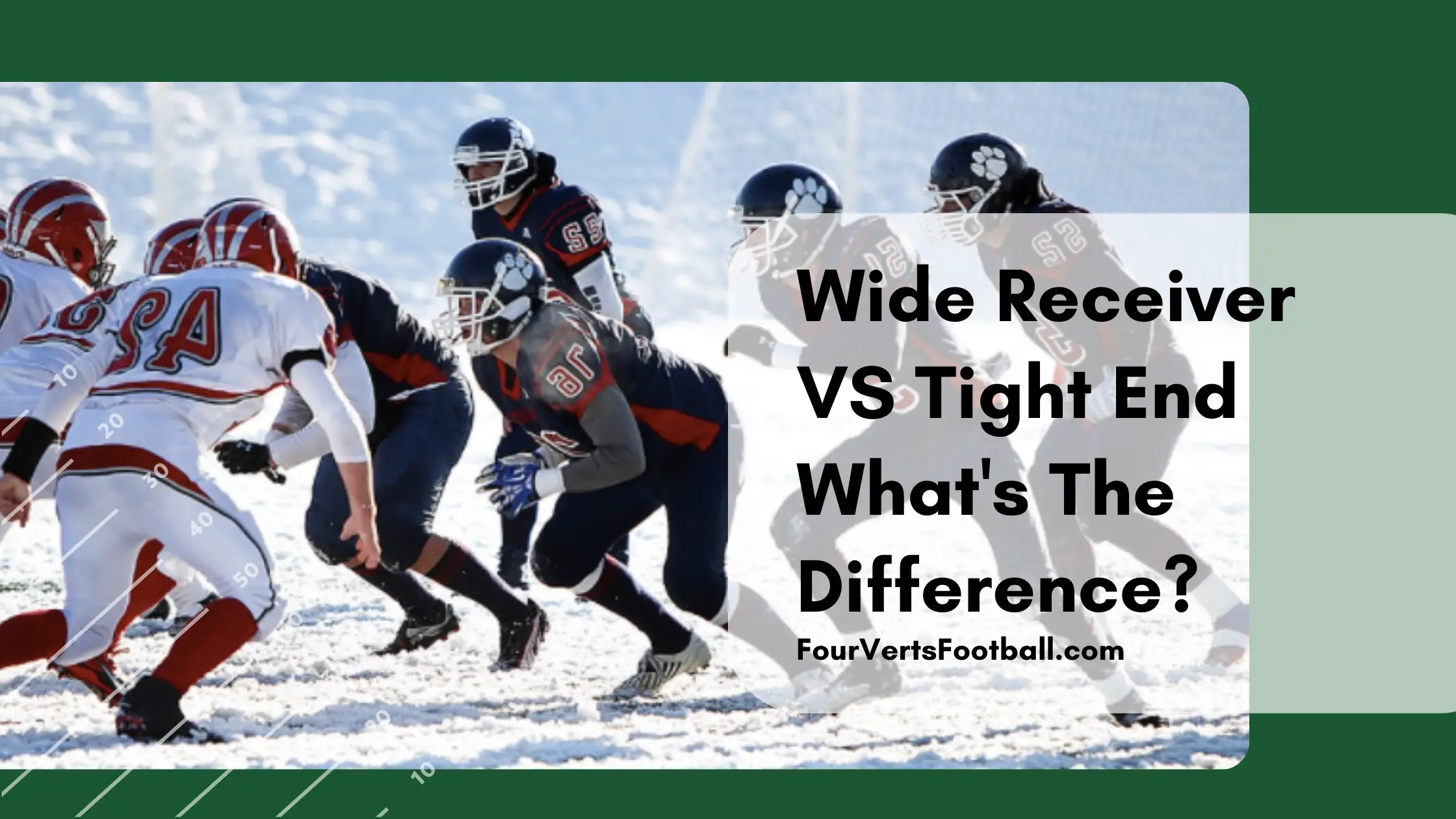With all of the different positions in the game of football, it can be tough for fans to keep up. One questions fans often ask is what is the difference between wide receivers and tight ends.
The difference between wide receivers and tight ends is that receivers have a single purpose of catching passes. While tight ends are equally valued for their ability to block defenders and catch the ball.
Compare other positions like receiver vs tight end with our guides to tight end versus running back or running backs versus wide receivers.
Rushing Plays

When it comes to rushing the football tight ends and receivers are going to play very different roles.
Wide receivers usually line up near the sideline far away from the formation. For this reason, their blocks on running plays do not tend to be a big factor in the play.
Additionally, these players will usually be tasked with blocking cornerbacks. Cornerbacks are usually the smallest players on the field meaning the receiver’s job on this play isn’t usually very difficult.
Tight ends on the other hand are a huge part of the blocking scheme. These players tend to lineup on the end of the offensive line meaning they are usually close to the middle of the field.
Tight ends often act as an extra offensive lineman on rushing plays and are tasked with blocking big defenders. They will often take on defensive ends and linebackers who are some of the strongest players on the defense.
This position is so prevalent in the running game that you will find the offense will almost always rush to the side of the field that the tight end is on.
Having a tight as an extra blocker often makes the difference in breaking off a huge run. Additionally, on some rare occasions, you will find that the tight end may run with the football on a rushing play.
Passing Plays

When it comes to receiving passers wide receivers are the most important position. Though both tight ends and wide receivers catch passes receivers do it much more frequently.
On most plays, a team is going to have two or three receivers on the field looking to catch passes.
Wide receivers catch passes at all depths of the field but are the only position that frequently catches deep passes.
The elite speed and ability to create separation allow wide receivers to consistently get open for a pass.
Receivers are noticeably faster than tight ends which often makes them much harder to cover.
Tight ends can be prominent pass catchers on some offenses though this is somewhat rare. Most teams will have several tight ends with multiple being used primarily for blocking purposes.
Wide receivers on the other hand are only on your team to catch the ball.
Build
The build between tight ends and wide receivers is noticeably different. Wide receivers are almost always going to be smaller in stature when compared to tight ends.
Though some huge wide receivers may weigh around the same as a tight end, the vast majority are going to be noticeably smaller.
This smaller size makes it easier for wide receivers to have elite speed and agility. Tight ends on the other hand need to keep their weight up in order to block effectively.
Since tight ends have to take on linebackers and defensive ends they need to keep a certain amount of weight on.
This can limit them when it comes to the passing game but that is just a reality of the position.
Wide receivers don’t have to worry about their size when it comes to blocking. This is because the position they are blocking is the smallest on the football field.
That concludes our guide to wide receivers vs tight ends see defensive tackle vs offensive tackle or defensive tackle versus defensive end to learn more about defensive positions.


I like the fact that Tightends can block and catch and Widerecievers can catch. If I was playing Quarterback, my top two favorite players would be both Widerecievers and Tightends when I’m throwing the ball to both my Widerecievers and Tightends and trying to throw a touchdown to either my Widerecievers or Tightends.